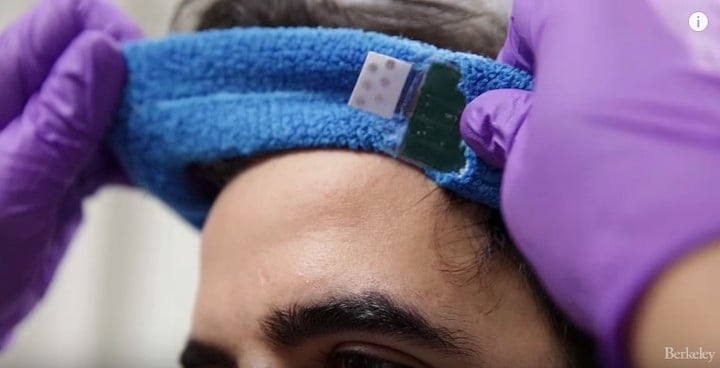Although modern people rely on fans, air conditioners and popsicles in the summer, humans have evolved a physiological mechanism of sweating and heat dissipation in the long history.
Humans are a species of mammals with a strong sweat. 30,000 years ago, a gene called EDAR370A in East Asia changed, so our sweat gland density is higher than other races 15%.

▲ Image from: UC Berkeley
The secretion of sweat is closely related to the state of fatigue and dehydration. Recently, the team at the University of California, Berkeley announced, they developed a wearable sensor that measures the amount of sweat in the body in real time.

This sensor not only tracks the movement speed of sweat in the microtube, but also calculates the amount of sweat secretion. It also monitors the concentration of metabolites such as sodium chloride, potassium chloride and glucose in sweat.
The sweat we usually flow is mainly secreted by the small sweat glands, and the water accounts for more than 99%. The rest is urea, sodium chloride, potassium chloride and so on.

The measurement process of the sensor, it can be said that this is the process of decoding the sweat flow and concentration. The researchers said that by printing the sensor on a plastic sheet, the device can be mass-produced like a newspaper.
The researchers plan to use this sensor in different parts of the body, through the number of local sweatingAccording to estimates to estimate the fluid loss of the whole body.

Although this wearable sweat measuring device is only a preliminary idea in the laboratory, it also indicates the future trend of wearable devices: no need to puncture the skin, no bleeding, mass production, and low cost.